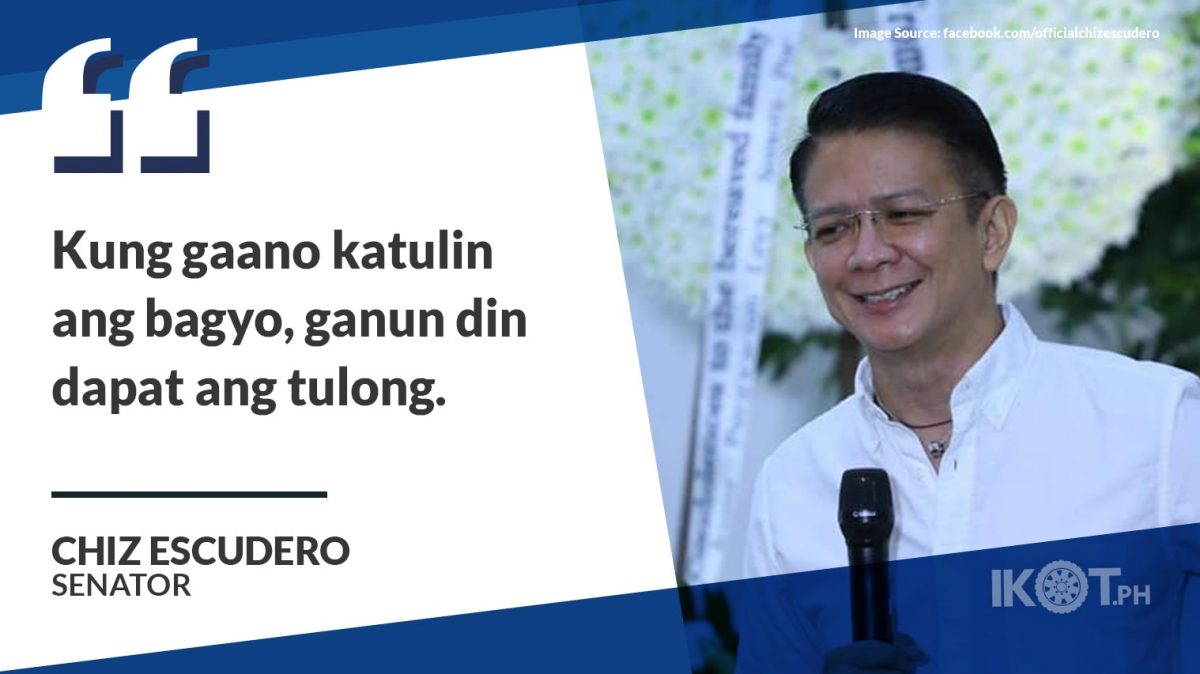Senator Chiz Escudero is pushing for the creation of a new government agency, if not a new department, to ensure the timely, efficient, and red tape-free distribution of relief and funds during disasters and calamities.
Escudero made the statement amid fresh calls from various sectors to put up a department for disaster response following the magnitude 7.0 earthquake that devastated the province of Abra, Ilocos Sur, and other parts of Northern Luzon.
“The law creating a strengthened disaster response agency should have an anti-red tape provision and must ban complex rules that impede the flow of rehabilitation funds to calamity-stricken areas.”
“The law creating a strengthened disaster response agency should have an anti-red tape provision and must ban complex rules that impede the flow of rehabilitation funds to calamity-stricken areas,” the veteran legislator said.
Speaking from experience as former governor of Sorsogon, the seasoned lawmaker lamented that fund releases during emergencies had been delayed because of the arduous process and voluminous documents that the national government required from the local government units (LGUs).
The Bicolano senator said the public will come to know about it when the Senate starts its public hearing on the various proposals.
“The forthcoming hearing on the creation of a new department or agency on disaster response, relief, and resilience will expose how long the process is and how long the list of documentary requirements are in securing so-called calamity funds,” he said, referring to the National Disaster Risk Reduction Management Fund (NDRRMF), which has an appropriation of P20 billion for this year.
The fund, primarily used to repair damaged infrastructure as well as pre-disaster resiliency measures against natural and man-made calamities, is on top of the P6.5 billion Quick Reaction Fund (QRF) shared among and released in advance to eight first-responder agencies.
“Wala namang malaking issue sa pagpapadala ng relief goods kasi nga sa QRF kinukuha. Ang may problema ay ‘yung reconstruction, tulad ng mga nasirang pampubliko at pribadong ari-arian,” Escudero explained.
He also shared that the journey of a Sangguniang Bayan resolution requesting funds to repair a destroyed irrigation canal, which releases usually takes months, if not a year.
Escudero described the process involved as “harder than that of a salmon swimming upriver”.
“First, it must be supported by a thick folder of documents, including project design, hazard maps, a program of work, design review, financial documents, at may drone video pa, and many more,” he said.
“Minsan meron pang listahan ng beneficiaries na hinihingi. Then it will be evaluated and vetted by many agencies, including site visitation. This stage calls for another set of documents such as assessment reports,” Escudero explained.
When the proposal is sent to Manila, he said, it will be coursed through the Office of Civil Defense and reviewed by the NDRRMC secretariat.
And if found meritorious, the Secretary of National Defense as NDRRMC chairperson will endorse it to the Office of the President, where it will undergo independent review, before it is sent to the DBM which, in turn, will conduct another round of due diligence assessment before it releases the funding authority documents for the project, Escudero added.
“There is room for improvement na pwedeng pabilisin ang proseso at bawasan ang mga dokumentong hinihingi.”
“There is room for improvement na pwedeng pabilisin ang proseso at bawasan ang mga dokumentong hinihingi. Hindi ba dapat ang needs assessment ay dapat manggaling na sa national because understaffed local manpower should be helping the victims instead of collating paperwork needed for a request that will take months to be finally approved?” he pointed out.
“Kung gaano katulin ang bagyo, ganun din dapat ang tulong,” Escudero concluded.


